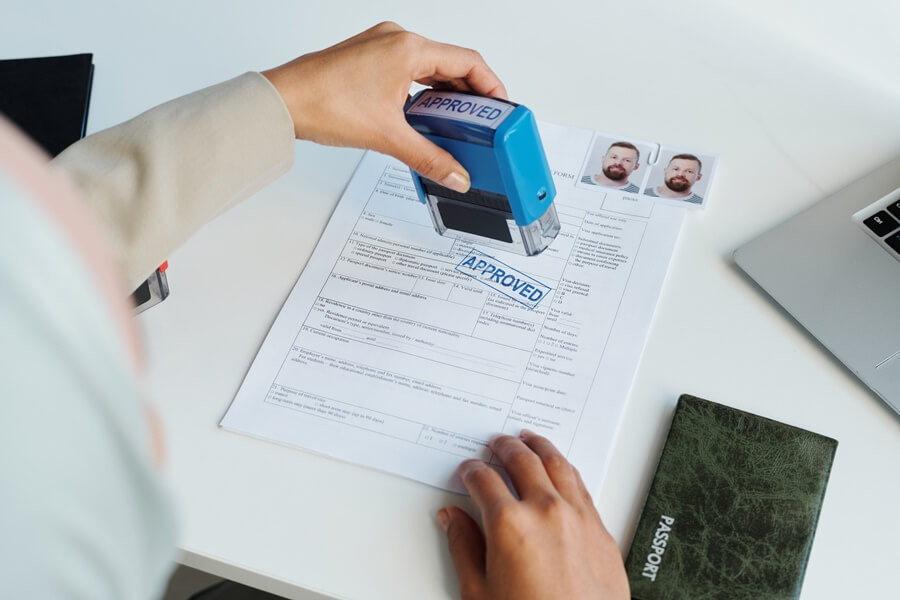
1. Check their reviews
Whether you are accessing reviews via platforms such as Homestars or Google, it is imperative to ascertain the company's longevity. It is advisable to trace their review history back to the earliest entries, observing the timeliness and responsiveness of the company in addressing reviews and resolving issues. This serves as a valuable indicator of the company's performance, longevity, and commitment to customer satisfaction.
In the case of a relatively new company, while this is acceptable, it is essential to consider that the warranty terms may not have elapsed on their completed projects. Consequently, there may be limited feedback on how they handle their work, replacements, or uphold their warranties.
Conversely, it is crucial to verify that the company continues to receive recent reviews, indicating the ongoing maintenance of business operations and adherence to quality standards. The absence of recent reviews, especially if there were previously numerous entries, could suggest a change in ownership, potentially impacting the consistency of work quality and customer satisfaction.



2. Check their pictures of previous work
Reviewing images of past swimming pool projects or examining the company's portfolio is a crucial step in assessing their capabilities. This provides tangible evidence that the company possesses the competence not only to fulfill the specified scope of work but to do so with excellence. Additionally, perusing a portfolio offers a valuable opportunity to witness diverse designs and styles that may serve as inspiration for your upcoming project.

3. Ask for References
Requesting references is a prudent step in the evaluation process. Reach out to previous customers who have expressed positive experiences with the company. In your conversation, inquire about any challenges they encountered during the project and seek their insights on areas for improvement.
Furthermore, to gain a comprehensive understanding of the company's work quality, consider inspecting projects completed one to five years ago. A site visit or obtaining the project's address adds a personalized touch for potential clients, providing them with firsthand insights into the caliber of the company's work. This approach ensures a more informed decision-making process for prospective clients.

4. Get Warranty Terms
Obtain detailed information on warranty terms before finalizing any agreements. Ensure that these terms are explicitly outlined within the provided quote, and confirm the contractor's commitment to standing behind their work.
Thoroughly review the clarity of the warranty terms, paying attention to the specifics of material and labor warranties. Clearly establish who is responsible for warranting the materials and who is accountable for warranting the labor. A transparent and well-defined warranty policy contributes to a comprehensive understanding of the contractual commitments and fosters confidence in the contractor's dedication to the longevity and quality of their work.

5. Ask for License
Request proof of licensure from the landscape contractor before proceeding with any agreements. It is crucial to confirm that the contractor holds a valid license to perform work within your municipality. This becomes especially imperative when engaging in structural projects such as building pools or decks.
Having a valid license ensures not only compliance with local regulations but also provides you with legal protection. In the absence of a valid license, you may be exposed to legal risks, and any potential lawsuit may lack protection due to hiring an unlicensed contractor. Verifying licensure is a fundamental step to guarantee the contractor's legitimacy and adherence to regulatory standards.
6. Ask for WSIB
Request documentation of the contractor's Workers' Compensation Insurance (WSIB) before proceeding with any work. WSIB is crucial in providing coverage in case of accidents or incidents involving workers or employees. Without this insurance, as the homeowner, you may assume full liability for any workplace-related issues.
Verifying that workers are legally permitted to work in Canada and ensuring they are covered by WSIB safeguards both the workers and the homeowner. This step is essential in mitigating risks and ensuring that the contractor and their team operate within legal and safety frameworks.

7. Ask for liability insurance
Prior to commencing any work, request documentation confirming that the contractor possesses Liability Insurance. This insurance is paramount in protecting both your property and the contractor's equipment. In the event of incidents such as theft or property damage caused by the contractor's equipment, liability insurance shields against potential legal repercussions.
Verifying the contractor's coverage ensures that, should any unforeseen circumstances arise, you are not held financially responsible for repairs or compensation. Whether it involves theft of equipment or accidental damage to your property or neighboring structures, liability insurance provides a crucial layer of protection and is a fundamental aspect to consider when engaging a contractor.
8. Check the quote details and if it includes all the information
Thoroughly review the details of the provided quote to ensure it includes comprehensive information. Confirm that all essential details, such as color options, material specifications, square footage, and the installation process, are explicitly outlined. This level of detail is crucial, particularly when comparing quotes from different contractors, as it allows for an accurate and equitable comparison.
If any pertinent information is missing from the quote, it is imperative to request clarification or additions. A comprehensive quote not only enables an apples-to-apples comparison but also serves as a contractual document that holds the contractor accountable for delivering as promised.
Ensuring that the quality aligns with the price quoted is vital. In cases where others may provide insufficient information in their quotes, holding your contractor to a high standard of transparency and completeness is essential for a successful and well-informed decision-making process.

9. Check payment terms
Examine the payment terms outlined in the contract to ensure they align with the dynamics of your project. It is essential to be cautious of companies requesting full payment upfront without any work being initiated. Opt for payment terms that are structured in stages, allowing you to monitor the progress of the job as it unfolds.
Having a payment schedule tied to project milestones provides transparency and enables you to gauge the completion status. Additionally, it is advisable to incorporate flexibility in the payment terms. This flexibility could include the option to request delayed payments or even negotiate custom payment terms, particularly for larger projects where progress payments might be more suitable. By addressing payment terms with clarity and flexibility, you can establish a fair and manageable financial arrangement with the contractor.
10. Check their work in progress
Evaluate the ongoing work by visiting the job site to assess the working conditions. Pay attention to the cleanliness of the site, including proper disposal of waste materials. Observe how equipment is organized and stored, ensuring a safe and efficient working environment.
Engage with the current homeowner to gauge their satisfaction with the work completed thus far. Inquire about their experience with the contractor, the quality of workmanship, and any issues or concerns that may have arisen during the project. This direct feedback from the homeowner provides valuable insights into the contractor's performance and the overall satisfaction of clients.
By physically inspecting the work in progress and seeking feedback from current clients, you can make informed decisions about the contractor's reliability, professionalism, and the quality of their ongoing work.



